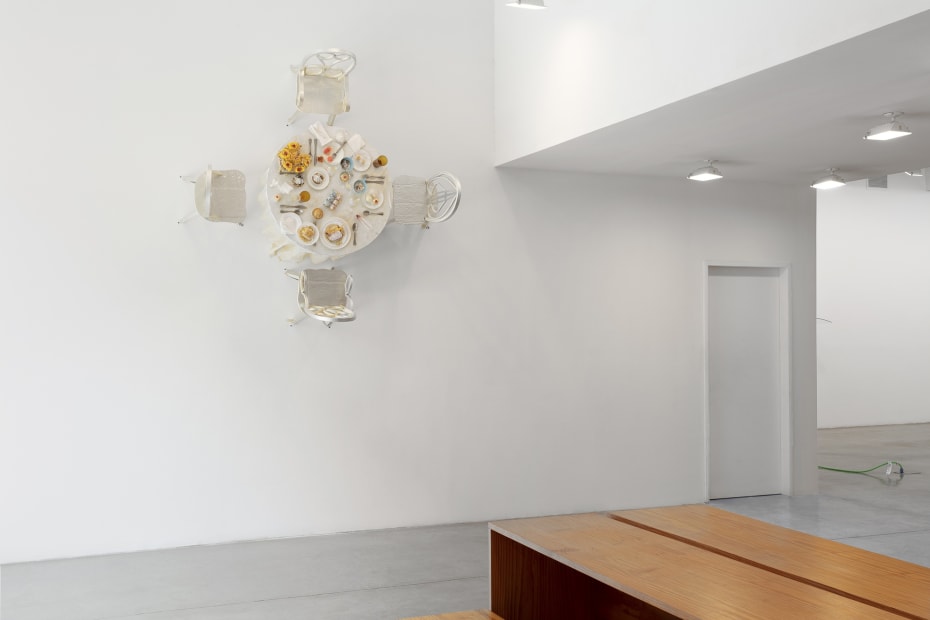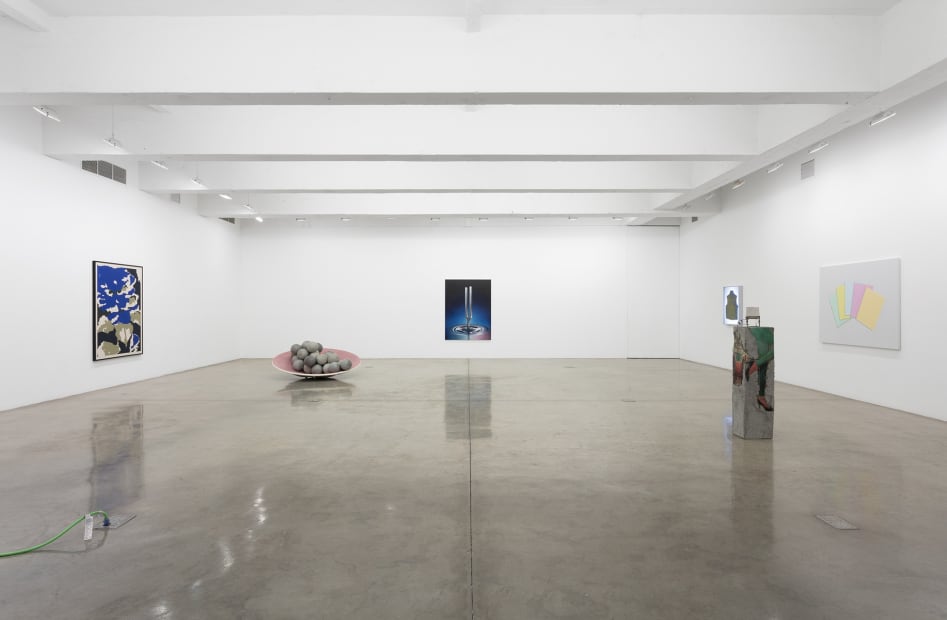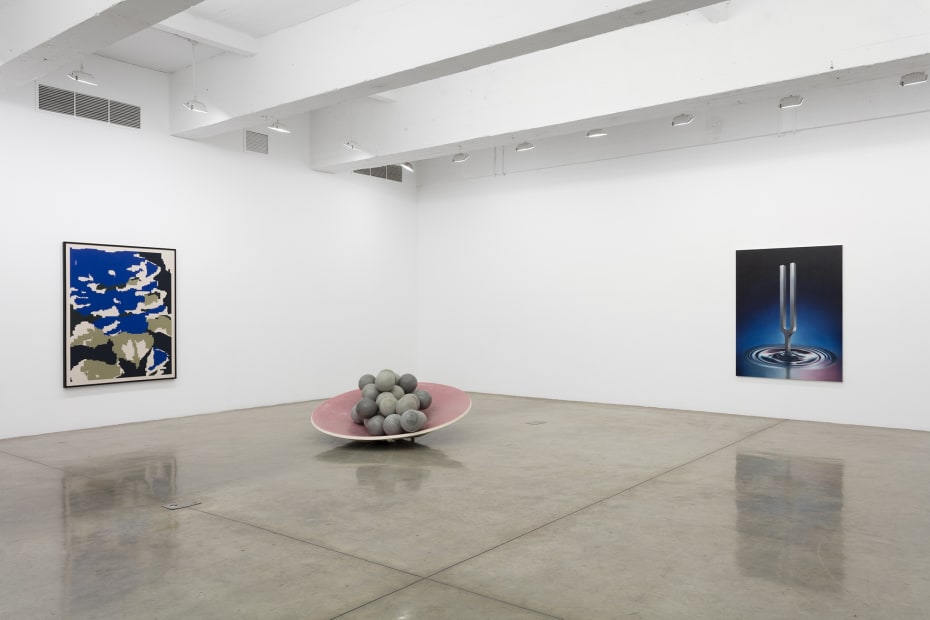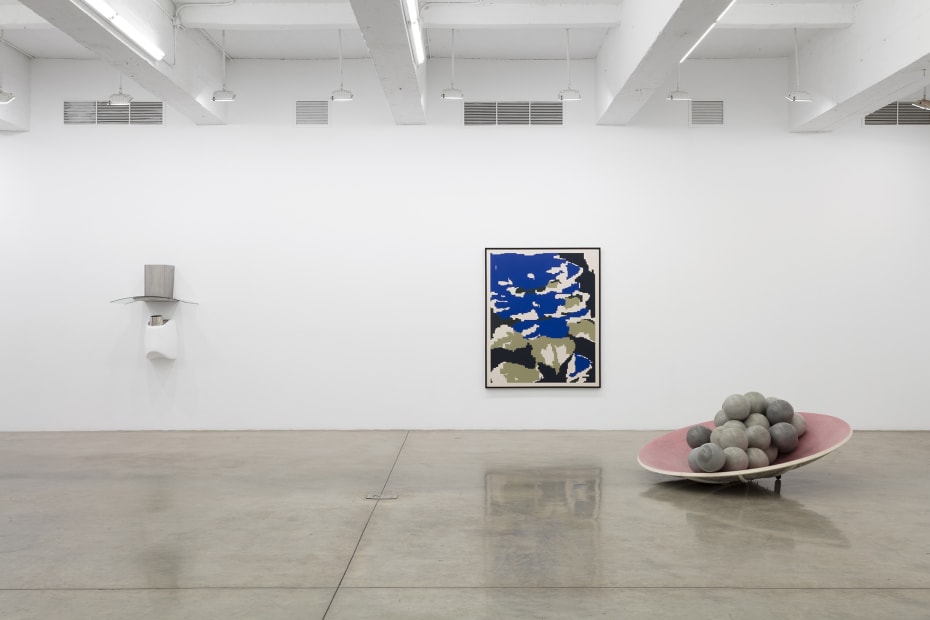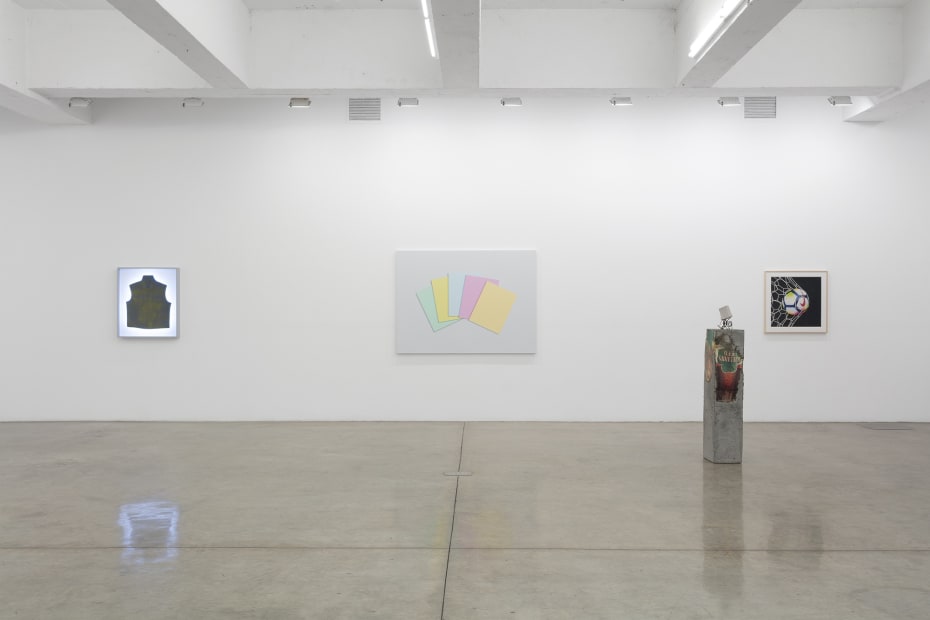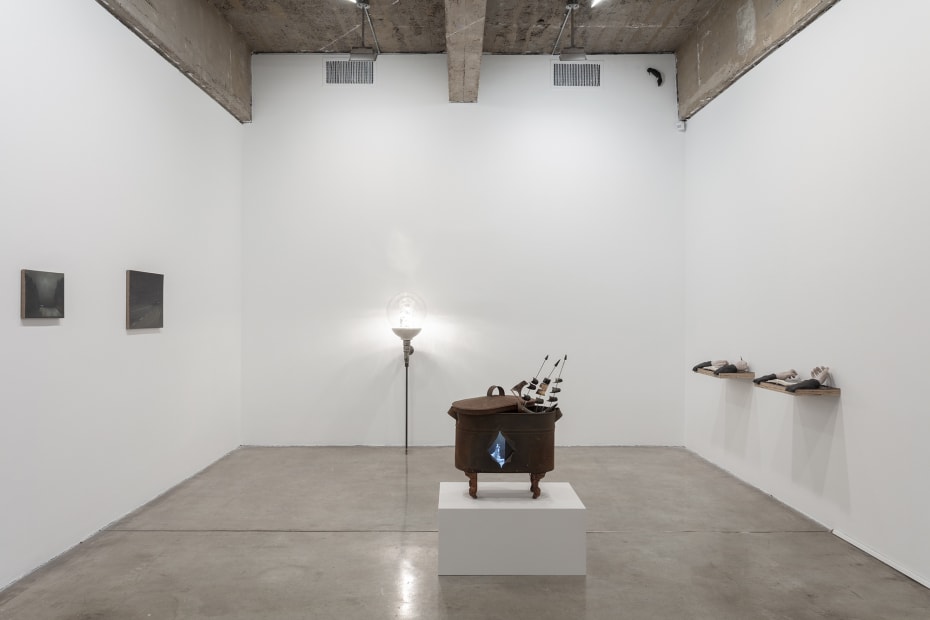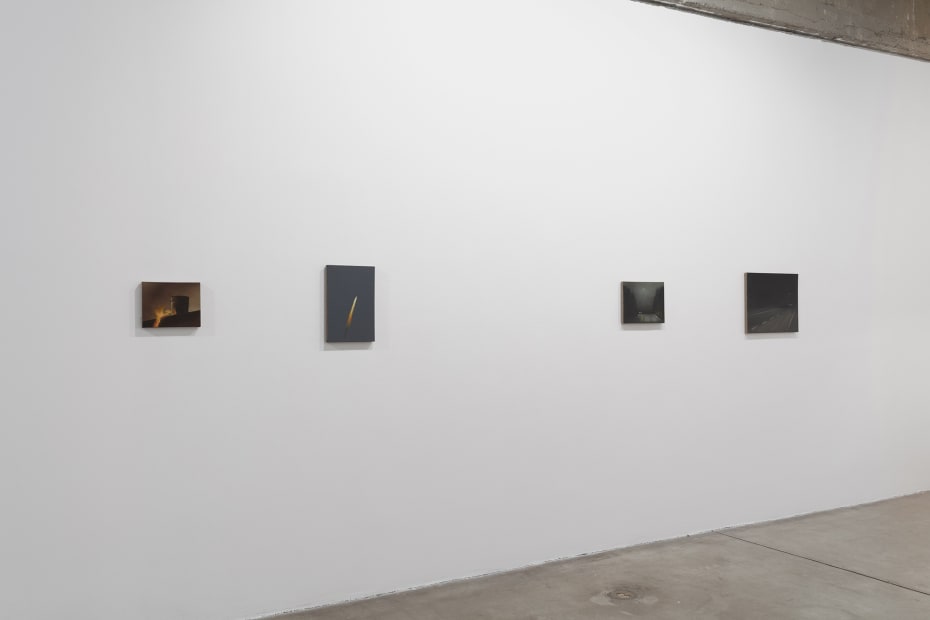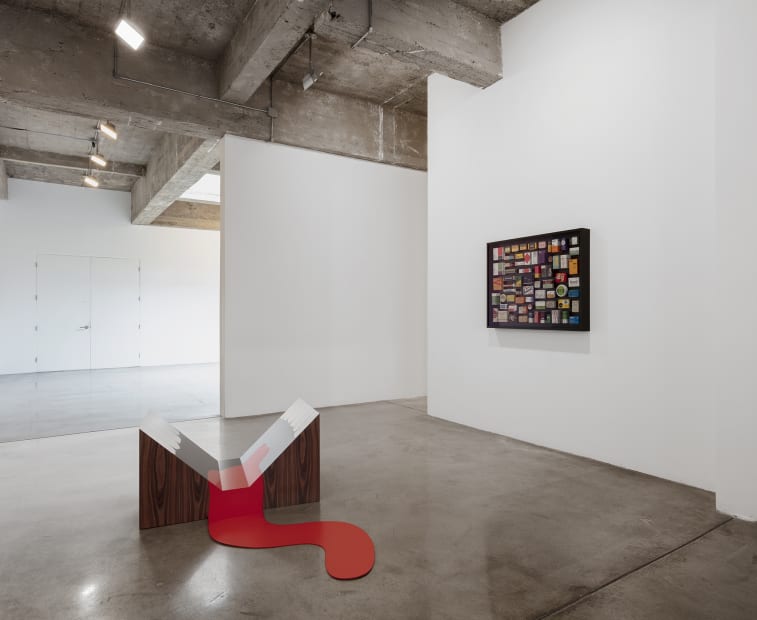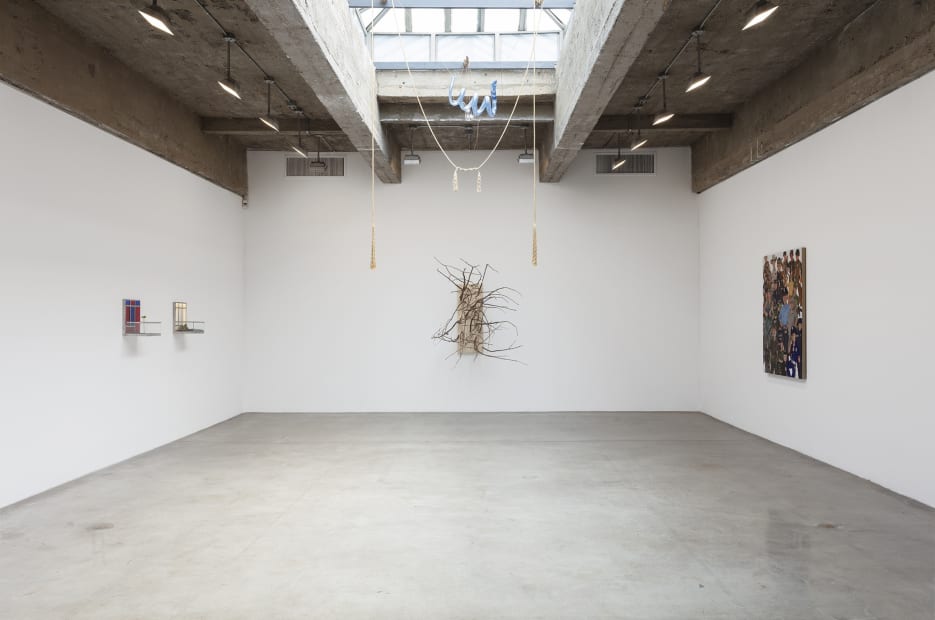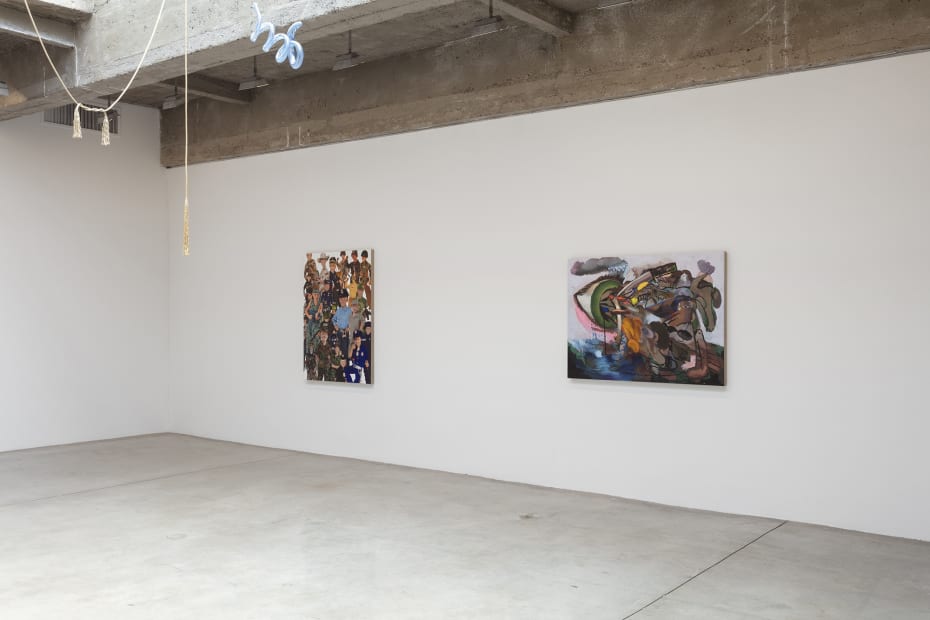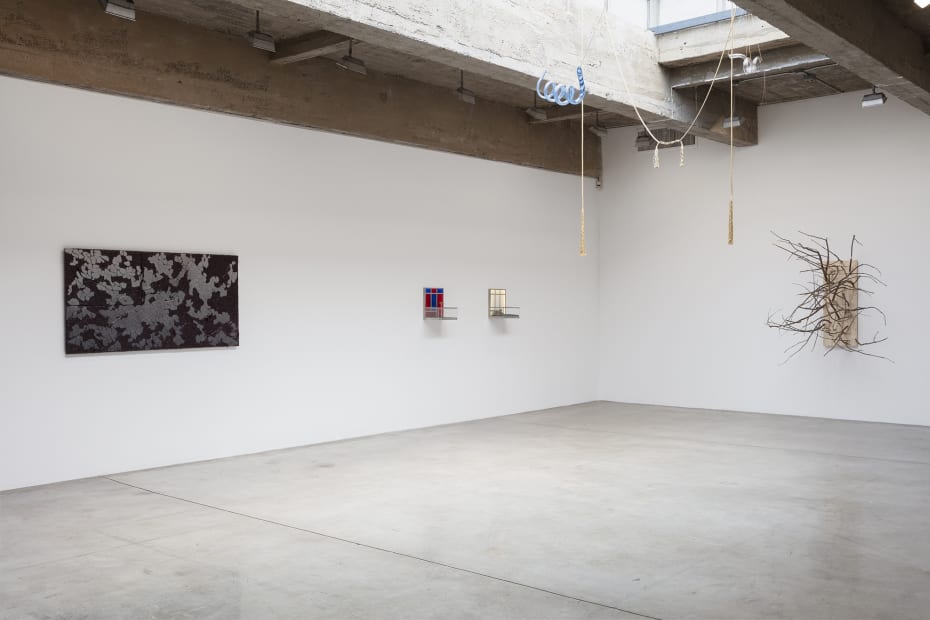PINE BARRENS: Tanya Bonakdar Gallery, New York
Kelly Akashi
Mathew Cerletty
Catharine Czudej
Laeh Glenn
Samara Golden
Van Hanos
Hugh Hayden
Dan Herschlein
Elizabeth Jaeger
Zak Kitnick
Agnieszka Kurant
Ajay Kurian
Anna Pollack
Dana Powell
Kathleen Ryan
Borna Sammak
Max Hooper Schneider
Hayley Silverman
Emily Mae Smith
Slavs and Tatars
Nicole Wermers
Nestled between the stretches of New Jersey’s dense suburban and industrial landscape is a strange wilderness called the Pine Barrens. Farmers gave up on the land long ago due to its acidic soil, but other kinds of life remain and thrive in cycles of regeneration. Disasters always appear to be near, but their outcomes feel suspended. A land in limbo—Pine Barrens is a conduit for our contemporary psyche, one impressed with uncertainty and anxiety, caught between the familiar and the alien. Despite their vastly different manifestations, the artists included in this exhibition all share something of this angst.
Pulling from the domestic subconscious, Samara Golden’s hyper-real dining table floats with the weightless precarity of an anxious dream. The most effective horror and sci-fi stories establish the feeling of paranoia gained in a recognizable place set just outside of reality. It is the experience lying closest to our existence that often reveals our deep-seated fears—composed on the periphery, looking into the thing that’s already inside of you. Dan Herschlein’s and Dana Powell’s domestic obscurities serve as propositions for a knowable, particular sort of place featuring representational scenarios or domestic archetypes suspended in bizarre anagrams, or moments of anticipation. Hayley Silverman’s recontextualized sculptural beacons also employ items found in the home. Rendered functionless and idol-like, these works become displaced effigies or the soul of things from another era. Bearing the same nod to latent nostalgia, Lone Wolves by Van Hanos is painted in a cartoonish, photographic portrait-style that nods to J.C. Leyendecker or Norman Rockwell. The work presents a collage of found internet imagery depicting white male children outfitted for Halloween. Hanos’ discussion of illusion versus reality is reinforced in the critique presented in Ajay Kurian’s ‘balconies’. Kurian’s Illusions (Dominoes) and Illusions (Irma’s Place) are miniature architectural spaces that reference the socio-political fantasies activated in Jean Genet’s play, “The Balcony” (1957).
The subtle shifting of banal objects unfolds across the exhibition. In meticulous commodity portraits, Mathew Cerletty isolates the everyday with deft craftsmanship that feels almost absurd in its celebration of the mundane. Receiving the same style of floating veneration, Max Hooper Schneider’s Battle Vest 3, is a favorite denim artifact from the artist’s own teenage wardrobe cast in ceramic. Set inside a light box, the object takes on a glowing and mystical presence. Givers and Takers #1, by Nicole Wermers combines models of stainless steel ventilation fans from a domestic kitchen, with hand dryers found in public restrooms. While the fans are readymade, the hand dryers are scaled up and inverted to underscore the balance between public and private space and their counteractive functions. Zak Kitnick’s, Dialing (Now), (Later), and (Again) reimagine early experimental dialing-patterns. Proposed to replace the rotary telephone, our current universal format for the device is based on these prototypes. As a conduit for a new frontier of communication, this technology has tangentially dictated the unified nature of our interior and exterior lives. Slavs and Tatars also gesture towards the importance of language and the spread of information—especially from historical and analogue perspectives and in the form of books. Rahlé for Richard suggests the shape of the holy bookstand or rahlé and also resembles an open mouth with protruding tongue. Displayed within a medicine cabinet, Placebo by Agnieszka Kurant brings together a series of imaginary pharmaceuticals mentioned in literature, films, comic books and pop culture. Kurant’s reproductions explore the implications of neatly packaged but fictitious subjects—only after close inspection can you tell these phantom drugs from the real thing.
Today’s kaleidoscopic experience of imagery, information and reproduction are crisply defined by Laeh Glenn. Resolutely generic, stock or low-grade jpegs found on the Internet, have been restored by the artist, and transformed into deliberate compositions with a historical connection to motifs of painting. Borna Sammak also appropriates graphics and cheap consumer items. Sammak’s layered video collage is comprised of isolated fragments from found commercials and animations, representing hours of footage compressed into brief 15-second variations. Anna Pollack’s, Jamaica Tapes explores memory through four vignettes based on everyday interactions in and outside of Kingston. The brashness and humility of Pollack’s subjects along with the rhythm of the vignettes are only a grey space of information—at once catalyzed and fossilized by the artist, and on the other end: edited, filtered, and lost.
In considering the human condition, a shift to a more empathetic approach to surrealism acts as a binding circumference. Across the works of Kathleen Ryan, Emily Mae Smith, and Catharine Czudej, the suggestive form of the fetishized female character is at once a delegate for pop iconography within the seductive language of advertising, and a symbol for the invisible emotional labor expected of women and their bodies. Ryan’s Bacchante bears the resemblance to a giant bowl of grapes. A pink satellite dish cradles solid concrete balloons reimagined and delicately in repose. The suggestive reclining form is an act of satire that marries faded American industrialism to the iconography of Venus on the half shell. Ryan’s coded gesture subconsciously feminizes the material and harnesses the deeply rooted archetype of the sexualized female form, mass-produced for public consumption. Through compositional and iconographic strategies, Mae Smith’s Empathetic Machine also breaks into historical discourse with a feminist bent. Rendered with the traditional techniques of oil painting, a tuning fork emerges in the foreground, rising from a rippling puddle inside an endless, otherworldly ocean. Like an antennae, the painting is a resonant body that aims to generate and absorb empathy. Czudej’s Killian's Red with Milwaukee and Roughneck by Rubbermaid X also presents a proxy for the Venus de Milo and a discussion of labor rooted in gender. The sculpture employs a concrete plinth for a readymade snap trap (a hunting tool), which seizes a hardened, but once playable, chunk of clay. Utility and entertainment are blended and objects for pleasure or enjoyment confounded. The soft clay set in atonement but distressed and entangled in a science experiment, employs features of a basement man-cave where DIY projects prove the master of domain a productive, self-sufficient pillar of the home.
Anthropomorphized objects continue in Elizabeth Jaeger’s, Kelly Akashi’s and Hugh Hayden’s sculpture. Jaeger’s omniscient ceramic birds take up residence throughout the gallery—their personified expressions of disappointment and worry replicate the subtleties of human emotion with an uncanny and deft acuteness. The nervous impressions of feathers also resemble scales, a reminder of the creature’s (and our own) relationship to geological time. Akashi’s Life Forms also consider existence. These suspended sculptures arrest fleeting gestures of 'liveliness' with permanent impressions of mortality that capture human time through the transformation of material—fossilizing momentary motion, and freezing it into perpetual existence. Hayden’s Welcome is carved from discarded Christmas trees collected on Park Avenue, viscerally refurbished to personify the architecture of the human body. The details of the object beckon a closer look but also force distance from the surface—welcoming and defensive, as a portal to the home or protection from the outside world, Hayden’s work is a manifestation of obtaining the American dream.
There is no singular shape, no tidy construction of uncertainty—it’s a feeling. Narratives, impressions, and objects all exemplify our humanness and bring the anxiety of living to light. As we collectively experience a kind of cultural vertigo, art acts as both a warning and a comfort, distilling all of the things that make tomorrow both welcome and terrifying. Altogether, it is our contemporary landscape.
All installation images above: Photo by Joerg Lohse
